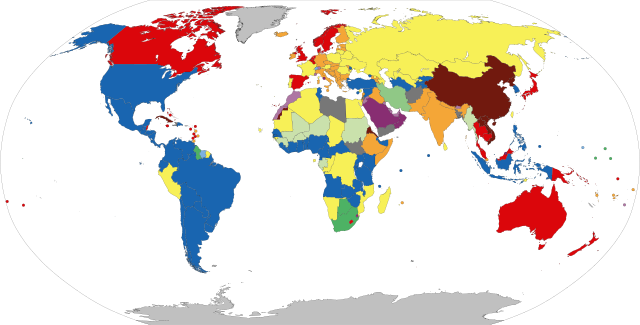
Parliamentary system
Form of government / From Wikipedia, the free encyclopedia
Dear Wikiwand AI, let's keep it short by simply answering these key questions:
Can you list the top facts and stats about Parliamentary system?
Summarize this article for a 10 year old
A parliamentary system, or parliamentary democracy, is a system of democratic government where the head of government (who may also be the head of state) derives their democratic legitimacy from their ability to command the support ("confidence") of the legislature, typically a parliament, to which they are accountable.

Parliamentary systems: Head of government is elected by and is accountable to the legislature
Presidential system: President is the head of government and is independent of the legislature
Hybrid systems:
Note: this chart represent de jure systems of government, not the de facto degree of democracy.[citation needed]
In a parliamentary system, the head of state and head of government are usually two separate positions, with the head of state serving as a ceremonial figurehead with little if any power, while all of the real political power is vested in the head of government. This is in contrast to a presidential system, which features a president who is usually both the head of state and the head of government and, most importantly, does not derive their legitimacy from the legislature.
Countries with parliamentary systems may be constitutional monarchies, where a monarch is the head of state while the head of government is almost always a member of parliament, or parliamentary republics, where a mostly ceremonial president is the head of state while the head of government is regularly from the legislature. In a few parliamentary republics, among some others, the head of government is also head of state, but is elected by and is answerable to parliament. In bicameral parliaments, the head of government is generally, though not always, a member of the lower house.
Parliamentarianism is the dominant form of government in Europe, with 32 of its 50 sovereign states being parliamentarian. It is also common across the Caribbean, being the form of government of 10 of its 13 island states, and in Oceania. Elsewhere in the world, parliamentary governments are less common, but they are distributed through all continents, most often in former colonies of the British Empire that subscribe to a particular brand of parliamentarianism known as the Westminster system.